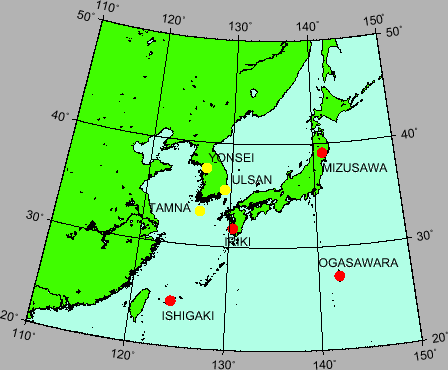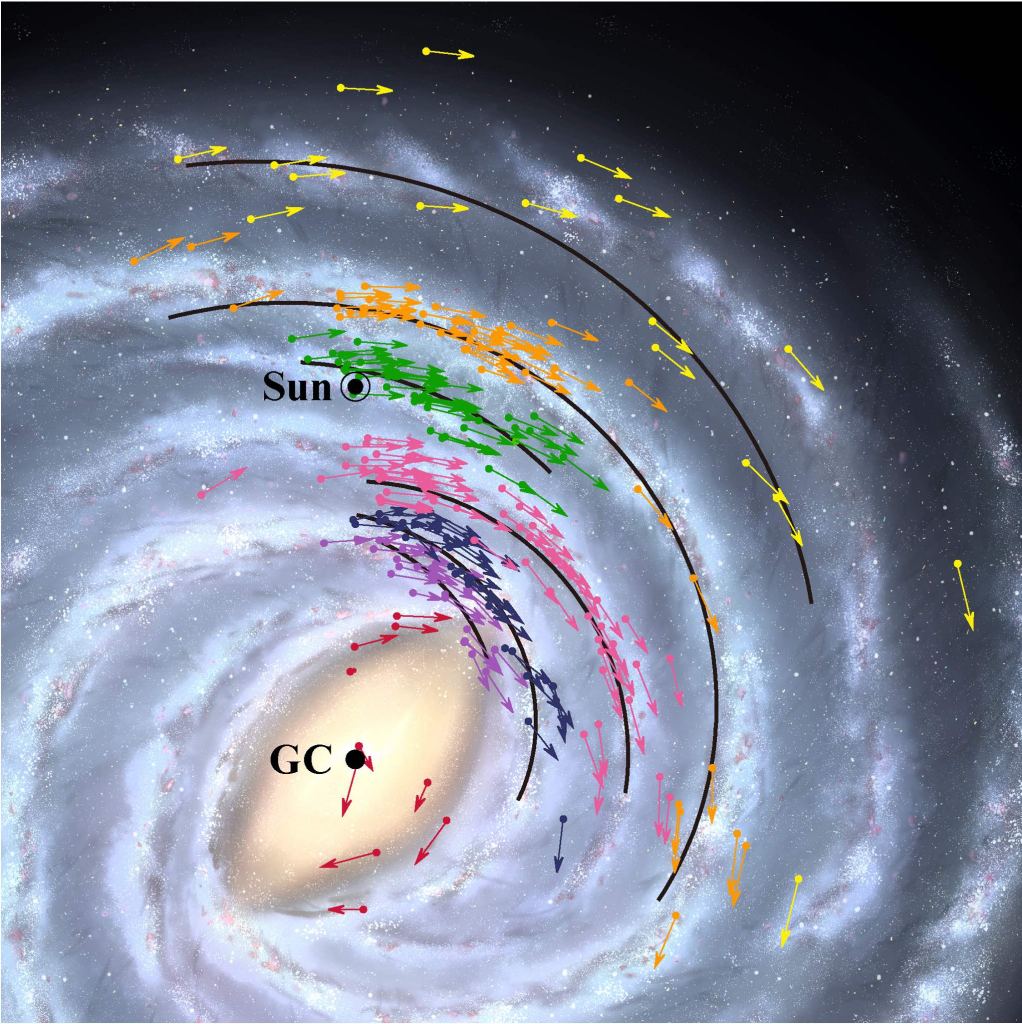Where are we? Cosmically, we’re in our home galaxy, typically known as the Milky Way. The center of our galaxy is marked by a supermassive black hole, which the Sun orbits at a distance of about 30,000 light-years. The official distance, set by the International Astronomical Union in 1985, is 27,700 light-years. But a new study as confirmed we are actually a bit closer to the black hole.
It’s difficult to figure out where we are in the galaxy. For one thing, we’re in the middle of it all, and a good chunk of our view is blocked by a region of gas and dust known as the zone of avoidance. We can’t simply step outside our galaxy and pinpoint our location on a map. The task is so difficult that it was only a century ago that Harlow Shapley first determined the Sun isn’t near the center of the Milky Way.

The best way to determine our location is to measure the position and motion of lots of stars. That’s easier said than done because motion is relative. While nearby stars orbit the Milky Way, so does the Sun, and we can only measure a star’s motion relative to us. Additionally, stars don’t follow the same general orbit. Some have more circular orbits, and others less circular. You need to measure enough to determine an aggregate motion of the Sun relative to the galaxy as a whole. But it is this type of measurement that has given us the official IAU distance.

To get a better measure of our location, the team used a technique known as Very Long Baseline Interferometry (VLBI). This is where an array of widely separated radio antennas work together to observe an object. Since light takes time to travel, the signal from an object reaches each antenna at slightly different times. By timing the signals, the team can pinpoint the location of the object. In this case, the team used the VLBI Exploration of Radio Astrometry (VERA), which has antennas scattered across the Japanese archipelago. VERA can pinpoint the location of a star to within 10 micro-arcseconds, which is roughly equivalent to the width of a penny on the lunar surface.

VERA has measured the position and motion of nearly a hundred stars in our galactic neighborhood. From this, the team determined that the Sun is 25,800 light-years from the galactic center. They also found that it orbits through the galaxy at a speed of 227 km/s, which is a bit faster than the official value of 220 km/s. This is just the team’s first data release, so we can expect their measure to get more precise over time. VERA will also be collaborating with the East Asian VLBI Network (EAVN), which has antennas in South Korea and China. From this, the team will be able to pin down stars to within 0.5 micro-arcseconds. So in the near future, we will be a bit closer to knowing exactly where we are.
Reference: VERA collaboration, et al. “The First VERA Astrometry Catalog.” Publications of the Astronomical Society of Japan 72.4 (2020): 50.

